Miriam Sentler
Ancestors Rising
This work was made with Deep Time Agency and in the context of the Rheinische Braunkohlerevier. Thanks to archaeologists Martin Street and Marcus Wild, the LVR Landesmuseum Bonn, Monrepos, Museum for Archaeology and Human Behavioural Evolution, Guido Steffen, Robin Peters, Frank Moseler
Team: Casper Brink (camera), KIWI Aerial Shots
(drone operations), Frank Broos en Susanne van der Steen (3D scan & print)

The project is generously funded by
BBK-Projektbüro NEUSTART, Berlin (DE)
(2021/2022) Video installation, site specific performance, drone flight over Garzweiler lignite pit (DE)
Ancestors Rising was a site-specific intervention at the Garzweiler lignite mine. In 1987, archaeologists made a unique discovery in the middle of the pit when they found two 10.000-year-old antler frontlets. These extremely rare objects were most likely part of a shamanic garb, worn during important ceremonies in the stone age. The work reactivated the antler artefacts through a site-specific intervention on site by temporarily bringing the archeological objects back to their exact find place in mid-air.
According to the scientists who studied the antler objects, they may have symbolised a connection with the wider universe, reaching out into the cosmos from the top of the head like antennae. The Mesolithic shaman created change in the physical world from the visions he received from the universe, affecting health, fertility, crops and hunt. Next to equipping us with the technical information about the age of this erased cultural landscape, the antler headdress’ symbolical meaning might be of an even stronger, potentially activistic quality. It reconnects us back to a time when humans still saw themselves as part of the wider environment. Rituals of sacrifice and worship were meant to keep the gods satisfied and kept humans in check with the forces of nature, contributing to a holistic balance with their surroundings. In the Anthropocene, this balance has been disturbed. At the same time, the Stone Age can be seen as a turning point in human history. The cultivation of fire and the start of agriculture might have been the first indications of the nature-culture dichotomy.
Ancestors Rising aims to revisit this point of departure in order to rethink the role of humans in this particular environment and to envision ways to reconnect with the intrinsic nature of the land. The work reactivated the antler artefacts through an intervention on site by temporarily bringing the archeological objects back to their exact find place. Nowadays, the geographical coordinates point towards a location in the sky, since all surrounding earth has been excavated. Therefore, a drone was used to fly one of the objects back to its original location. The other replica was used as an extension of the antennae of the pilot’s remote control, re-establishing a link to its original function as an instrument, used to transmit signals into the atmosphere. To make this possible, replicas were printed from 3D scans of the original antlers. The new objects were then re-designed to form a new instruments together with the drone and remote control, merging the ancient with the contemporary.
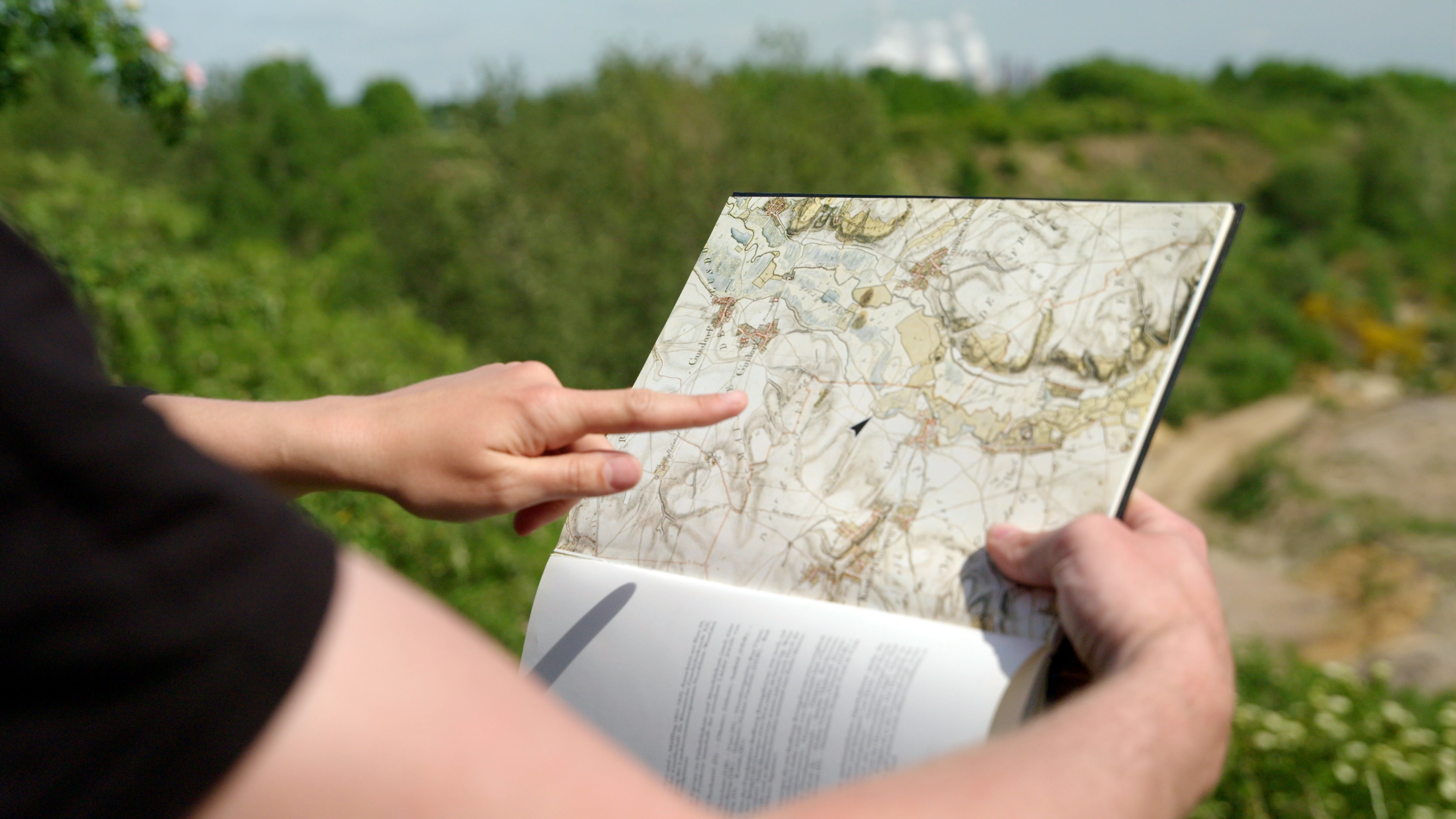
Still Ancestors Rising video, finding place of the antler frontlets, 2022. Photo credits: Miriam Sentler & Wouter Osterholt
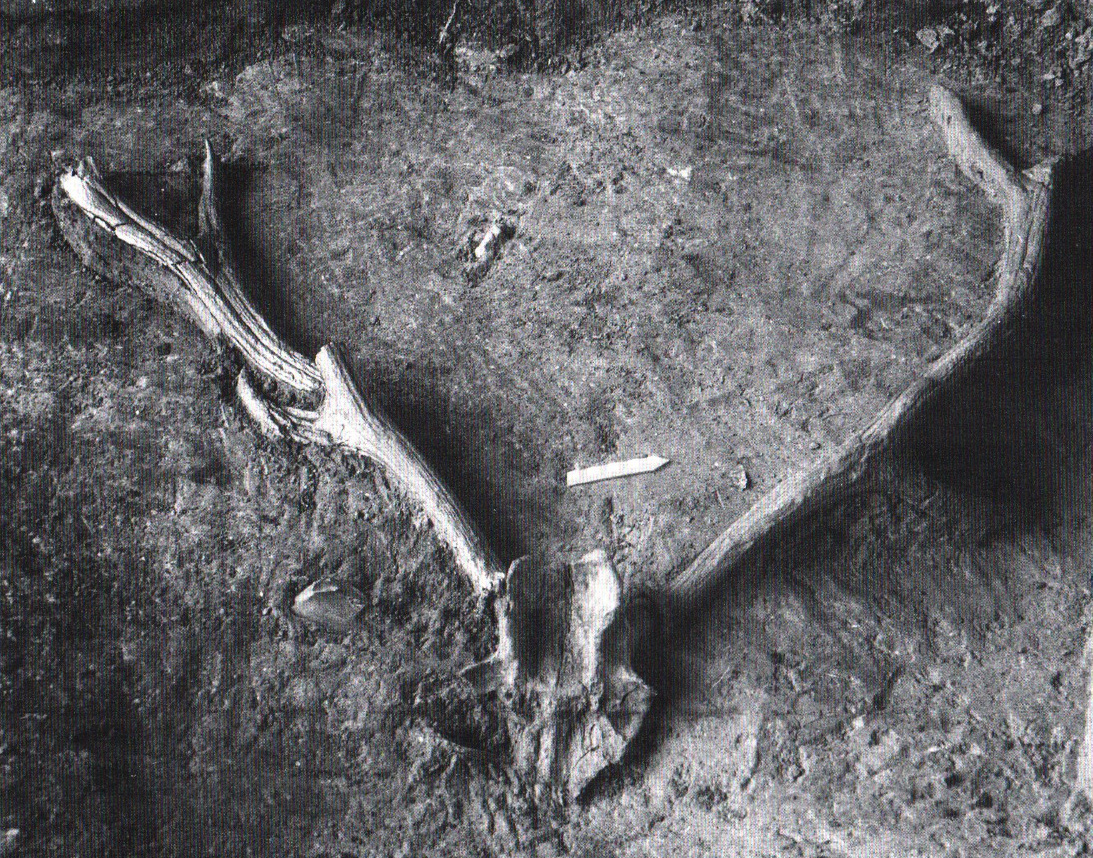
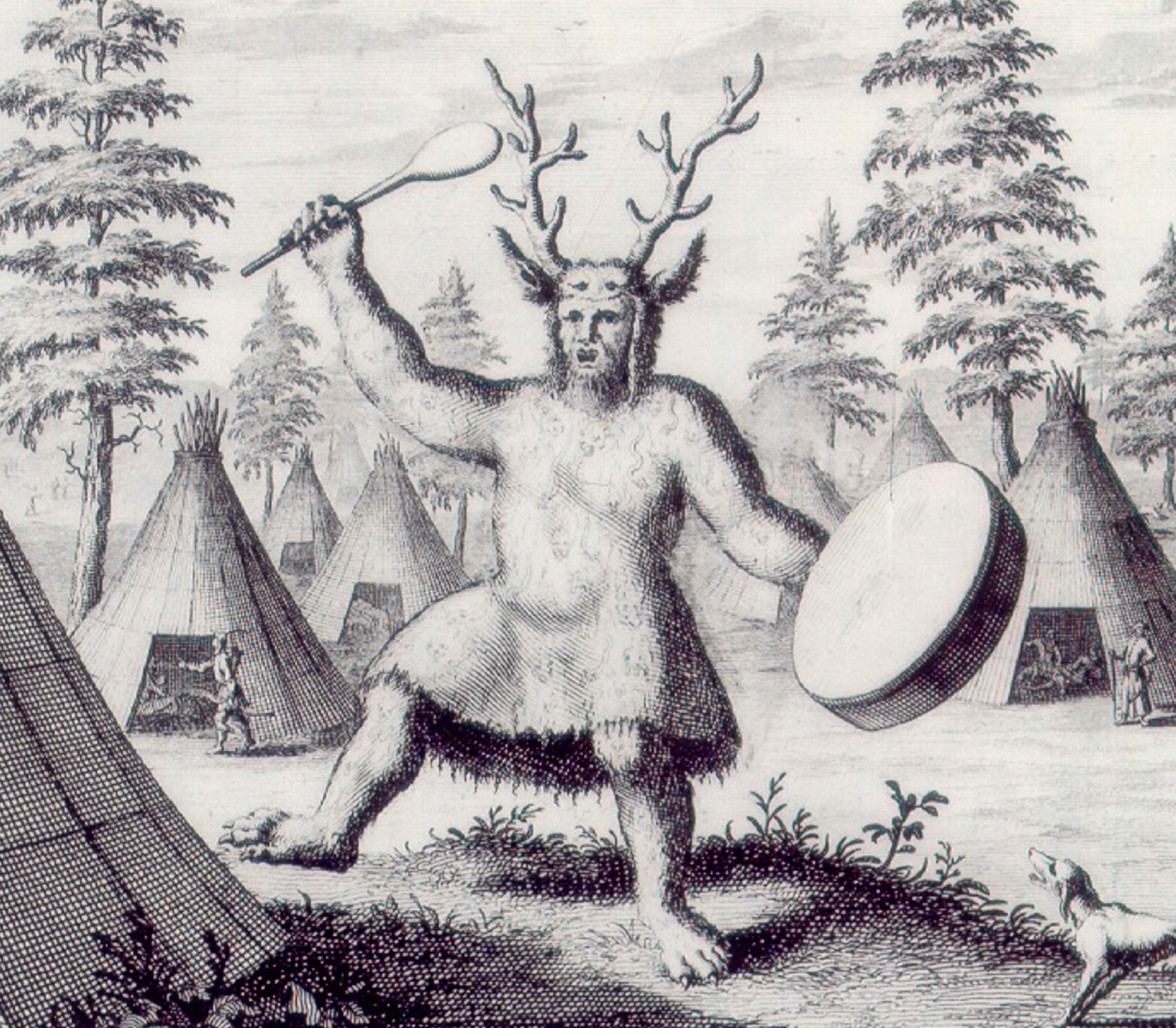 Image of the archaeological find by Martin Street and illustration of a Stone Age shamane wearing an antler frontlet, Nicholaes Witsen, 1692, Russia.
Image of the archaeological find by Martin Street and illustration of a Stone Age shamane wearing an antler frontlet, Nicholaes Witsen, 1692, Russia. 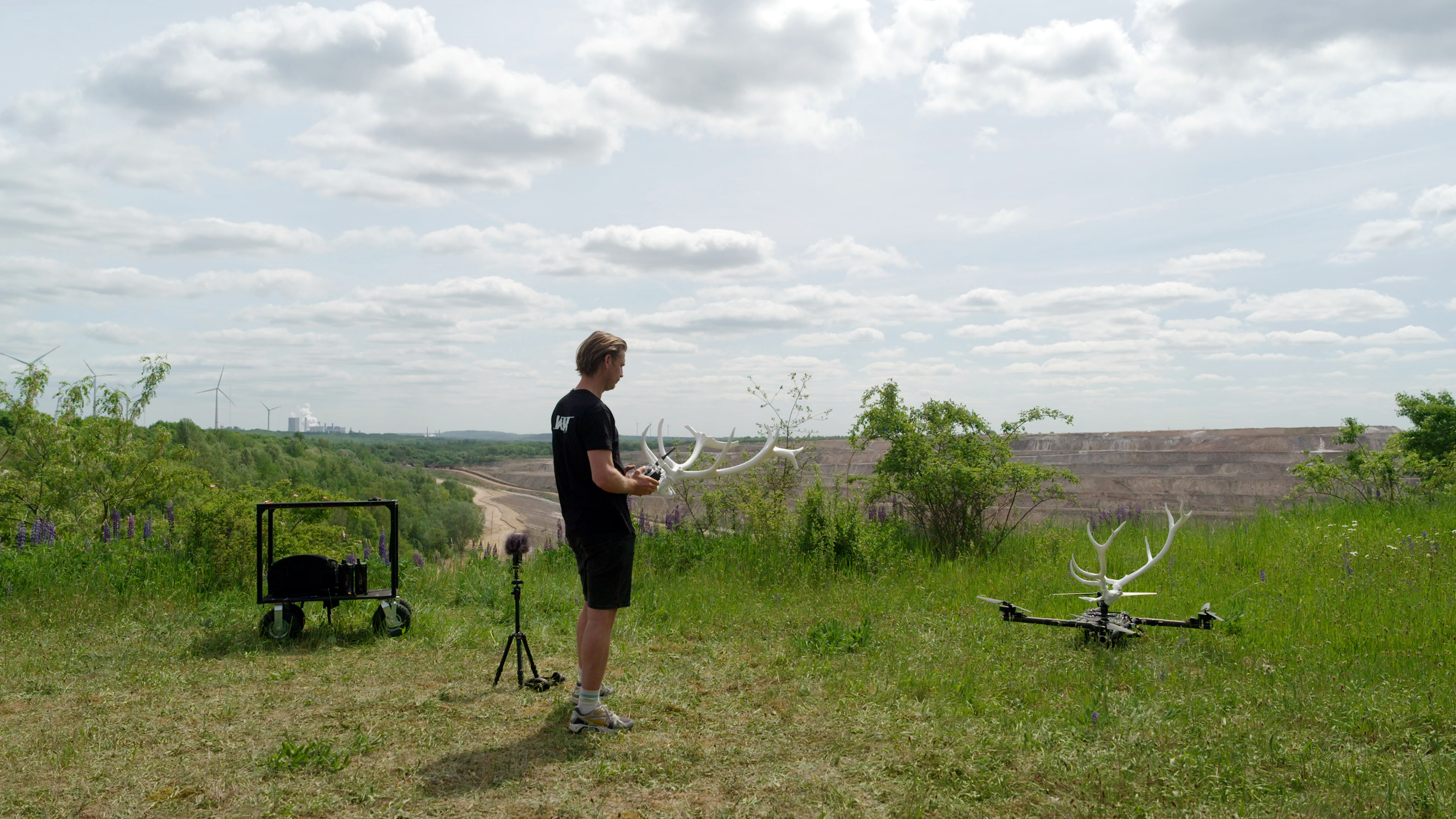
Still Ancestors Rising video, 2022. Photo credits: Miriam Sentler & Wouter Osterholt

Still Ancestors Rising video, 2022. Photo credits: Miriam Sentler & Wouter Osterholt

Still Ancestors Rising video, 2022. Photo credits: Miriam Sentler & Wouter Osterholt
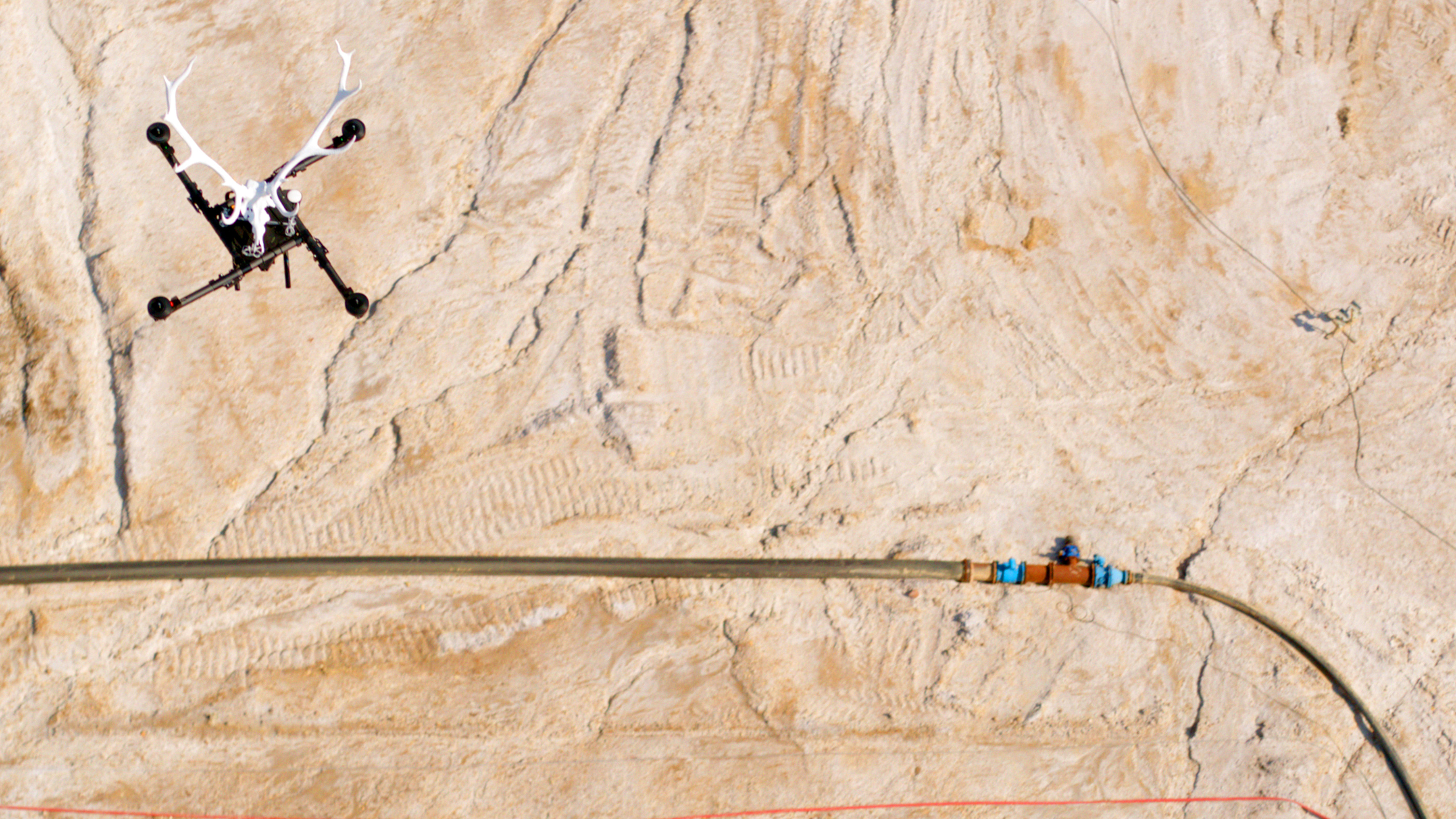
Still Ancestors Rising video, 2022. Photo credits: Miriam Sentler & Wouter Osterholt

Still Ancestors Rising video, 2022. Photo credits: Miriam Sentler & Wouter Osterholt

Still Ancestors Rising video, 2022. Photo credits: Miriam Sentler & Wouter Osterholt
![]()

Still Ancestors Rising video, 2022. Photo credits: Miriam Sentler & Wouter Osterholt

Filming Ancestors Rising, former Garzweiler pit by Frimmersdorf, North-Rhine Westphalia (DE), May 2022

















